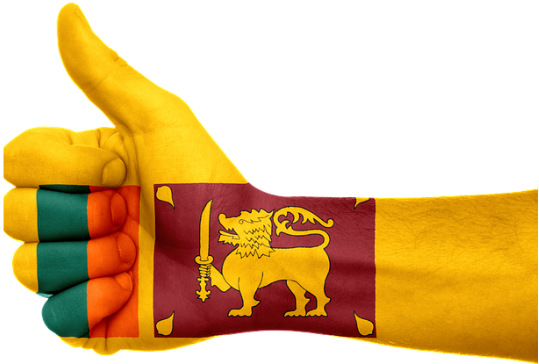Should a COVID-19 patient with poor lung function go under ventilator management?Written by Dr. Harold Gunatillake-Health writer

Confusing terms when it comes to the management of Corona virus endemic
First thing we need to discuss is the difference between SARS-CoV-2 and Covid-19.
The former is the scientific name of the virus that is causing the current pandemic (SARS stands for severe acute respiratory syndrome)
The disease caused by this virus is called Covid-19
If you have the disease it means that you have been infected by the SARS-CoV-2
It is the same as in HIV virus causing AIDS.
HIV virus is like the SARS-CoV-2 and the disease you refer to as AIDS, is like Covid-19.
Medical equipment to manage the worst complication- Lung disease.
We need to know the difference between Ventilator and Respirator, and further whether the patients should be put under the ventilator in the ICU, having severe shortness of breath
Respirator is a face mask that seals around the mouth, including your nose to prevent droplet particles in the air entering your body.
Also, they do prevent the wearer from spreading droplets of any contagious virus or any other micro-organisms spreading onto others in the immediate surrounding, approximately for a distance within 1.5 meters.
The mask prevents the wearer from touching the face with dirty hands.
Ventilator
Ventilator is an apparatus which needs to be connected to the patient through a tube called the ‘endotracheal tube’. It is a sterile clean tubing inserted through the wide-open mouth, stretching the neck, and requirement of an anesthetist to insert, under sedation.
The intubated tube is then connected through an extended tubing to the ventilator, a breathing machine.
The machine is used in a hospital environment for cases that finds it difficult to breathe a condition called hypoxia- meaning lack of oxygen in your body.
In such cases, the person is immediately admitted to the ICU in the hospital and under light anesthesia, intubated and connected to the ventilator machine.
If the patient is unconscious the machine takes over the full breathing of the patients, by forcing air with oxygen and removing the Co2 from the lungs.
These ventilators are used in the ICU for sick patients who cannot breathe.
These ventilators are positive pressure ventilators-meaning that airway pressure is applied through the endotracheal tube, mentioned earlier and the machine pumps in the air mixed with oxygen at the normal breathing rate.
Then there is the volume assist- control ventilation (ACV) which delivers the oxygen and air when the patient breaths in.
In such a situation the patient is conscious, and he could control his breathing, and needs no intubation under anesthesia. A strong indication for this ventilator is in the treatment of an acute episode of bronchial asthma and COPD.
In other words, the patient initiates the inspiration and the machine assists in completing the process. These ventilators are only assisting control ventilators.
Should you use ventilators for COVID-19 patients?
Mechanical ventilation is used to keep the patient alive till the lungs recover and weaned off when the patient is fit enough to control the breathing.
Research has also shown that patients with breathing problems when put on a ventilator, the incidence of death seems to be high than those given oxygen through a nasal tubing.
It is also observed that those who survive after a ventilator life saving device when used, on recovery they suffer ongoing breathing problems caused by either the machine or the damage done by the virus.
COVID virus does not enter the body through your skin. The virus when inhaled settles on the mucus lining cells of the nose, pharynx, bronchial and alveolar cell lining.
The entry of the virus is through its protein spikes, at the site of the receptors in the lining cells called ACE-2.
After the virus enters the mucus lining cells the RNA starts replicating into myriads of tiny viruses which spreads into the neighboring and distant tissues.
The virus causes a severe inflammation of the lining cells and positive pressure ventilators seem to exacerbate the inflammation and cause more trauma, facilitating the virus to spread further.
Recognizing this feature, some intensive care units have started to delay putting a COVID-19 patient on a ventilator to the last possible life and death situation.
This situation was observed by the interventional pulmonologist Dr. Udit. Chaddha at the Mount Sinai Hospital in New York City.
Experts estimate that between 40% and 50% of patients die after going on ventilation, regardless of the underlying situation.
It is also observed from New York records that as many as 80% of people infected with the virus die after being placed on ventilation.
According to some doctors like DR. Hassan Khouli, chair of critical care medicine at Cleveland Clinic said, “that they are dying on the ventilator and not necessarily dying because of being on a ventilator”.
It is also observed that these mechanical ventilators do cause a wide range of side effects, inflammation described earlier, and complications due to lung damage from COVIS-19, making recovery a long arduous process.
Now, the news has spread in New York that those who are put on ventilators never come back from that.
It is also observed that patients going into a ventilator for many days experience a weakening of their diaphragm and all the other muscles involved with drawing breath.
Dr. Chaddha said, “When all these muscles become weaker, it becomes more difficult for you to breathe on your own when you’re ready to be liberated from the ventilator,”
These patients on being on ventilators for many days also are at risk of ventilator-associated ‘acute lung injury’, a condition caused by overinflating the lungs during mechanical ventilation.
UK’s PM Johnson was not put on a ventilator, though quite a life and death situation, and he was stabilized in the intensive care purely by giving oxygen inhalations
His progress was monitored by giving standard oxygen treatment and breathing without any assistance. He has not required any mechanical ventilation or non-invasive respiratory support,” Raab the foreign minister, told a daily news conference.
The demand for getting ventilators from China has lessoned due to the current findings and thoughts.



















